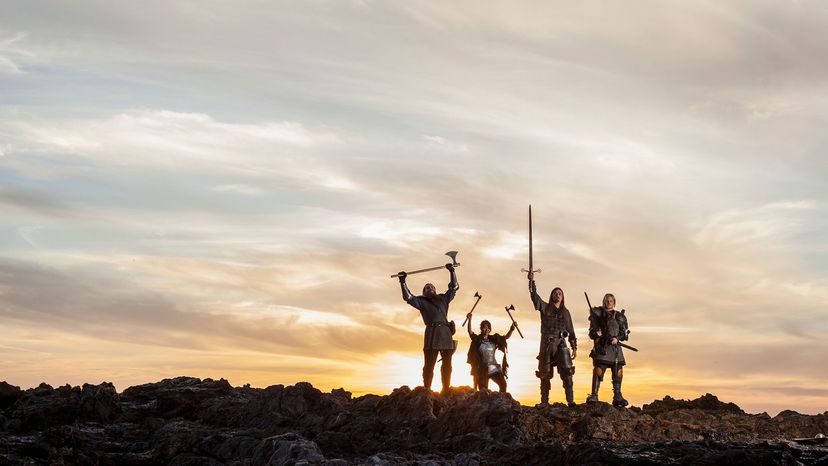
Image: Mike Raabe/Getty Images
About This Quiz
With "The Northman" still in theaters, now's a pretty good time to test your Viking history knowledge. Helmets, battles, Leif Erikson Day - our new quiz has it all. Grab some mead and let's get started.
Fill in the blank: The "Viking Age" (as it's popularly known) lasted from about ______________.
800 to 1050 C.E.
Throughout this period, Scandinavian sailors invaded, colonized, and/or explored much of Europe and the North Atlantic.
1350 to 1503 C.E.
105 to 55 B.C.E.
Sorry Hagar the Horrible, real Vikings did not wear horned helmets. What popularized that old myth?
Charles Dickens novels
19th-century operas
Scary Viking costumes used in "Der Ring des Nibelungen," an opera cycle created by Richard Wagner, solidified this stereotype. Archaeologists have never found a Viking helmet with horns.
Norwegian folk songs
Ivar the Boneless was a Viking warrior who helped lead a sizable army through Great Britain. How did he get his weird nickname?
He had a unique fighting style.
He had a physical disability.
Nobody really knows.
Maybe Ivar (who passed away in 873 C.E.) was called "boneless" due to some medical issue or a translation error. But alas, we can't be sure.
Advertisement
Which of these Shakespeare plays may have been inspired by a Scandinavian folk hero?
"Hamlet"
It's likely that the Bard cribbed material from the traditional story of Amleth, a Dane who avenged his murdered father. This tale later inspired "The Northman," a 2022 Viking epic.
"Romeo and Juliet"
"The Tempest"
Viking explorer Leif Erikson might have been the first European to ever set foot in North America. When did he go there?
around 800 C.E.
around 900 C.E.
around 1000 C.E.
Erikson led a brief foray into northeastern Canada (he probably landed somewhere around modern-day Newfoundland) around the year 1000, 500 years before Columbus arrived in North America.
True or False: The writings of Christian monks helped shape our modern perception of Vikings.
True
Viking often raided these monks, who then portrayed them as bloodthirsty maniacs. Yet modern historians don't think Vikings were necessarily more violent than other Europeans of their era.
False
Advertisement
During their heyday, Vikings established settlements at which of these European capitals?
Rome, Italy
Dublin, Ireland
Dozens of Viking gravesites have been found in Dublin, a region these Scandinavian travelers first settled during the early 840s.
Vienna, Austria
A Viking force. usually called "the Great Heathen Army" was defeated by what English monarch at the Battle of Edington in 878 C.E.?
King Edmund I
King Richard III
Alfred the Great, King of Wessex
Also known as simply "the Great Army," this band of invaders had arrived in Britain 13 years prior. Their loss at Edington prompted a key peace treaty.
Leif Erikson Day is observed every year on Oct. 9. Which was the first U.S. state to officially observe this alternative to Columbus Day?
New York
Wisconsin
The Badger State enacted legislation recognizing the holiday in 1929. Many other states followed suit - and since 1964, U.S. presidents have honored Scandinavian-Americans with yearly Leif Erikson Day proclamations.
Minnesota
Advertisement
L'Anse aux Meadows is a Newfoundland archaeological site that's really significant to Viking historians. What makes it so important?
It's the first Viking settlement in North America (outside Greenland).
Believed to be an overwintering spot for Norse explorers, this place is O-L-D. Radiometric dating tells us Vikings were living there in 1021 C.E.
It's where Leif Erikson's sister was buried.
Medieval Norsemen thought it was the home of Thor.
You Got:
/10
Mike Raabe/Getty Images